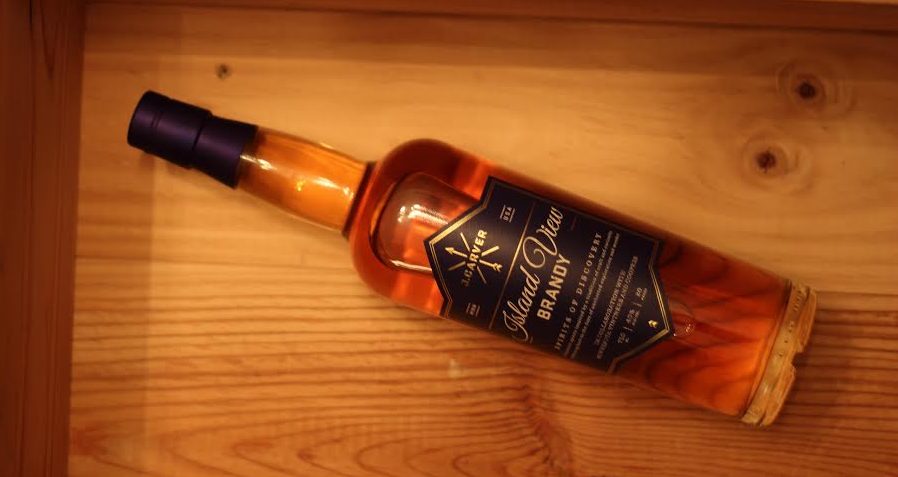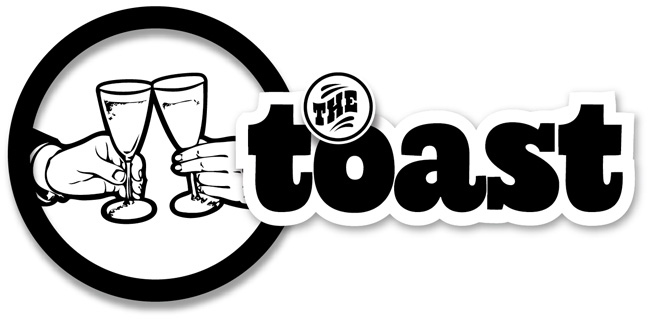
This week in the Toast: HeadFlyer Brewing and BlackStack Brewing open their doors, and J. Carver releases a Minnesota-made cognac-style brandy.
Editor’s note: Due to circumstances beyond our control, our original photos for this story were delayed. We hope to post them by the afternoon of Wednesday, April 26.
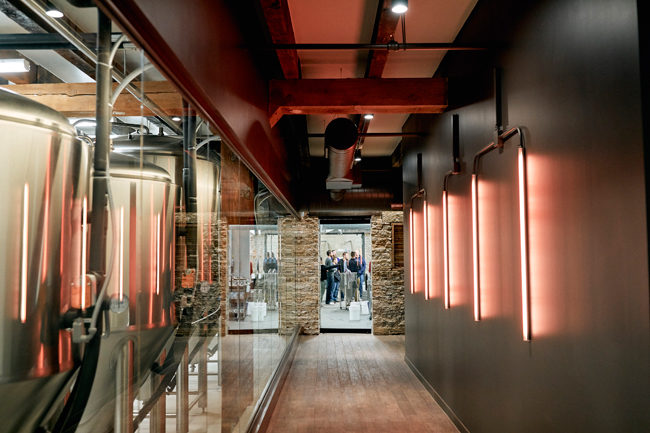
HeadFlyer Brewing now open
The new-brewery cookie cutter doesn’t fit HeadFlyer Brewing, which celebrated its grand opening on April 22. The space is not warehouselike, and the building in the Beltrami neighborhood is easy to find. The taproom makes the brew house look like an afterthought, not the other way around. And Neil Miller, the owner and head brewer, is one of the most approachable folks in the industry.
Miller, with a home-brewing background and training at the Vermont Brewers Association, appears to be the friendliest bartender of the bunch, when in reality he is the driving force behind the place.
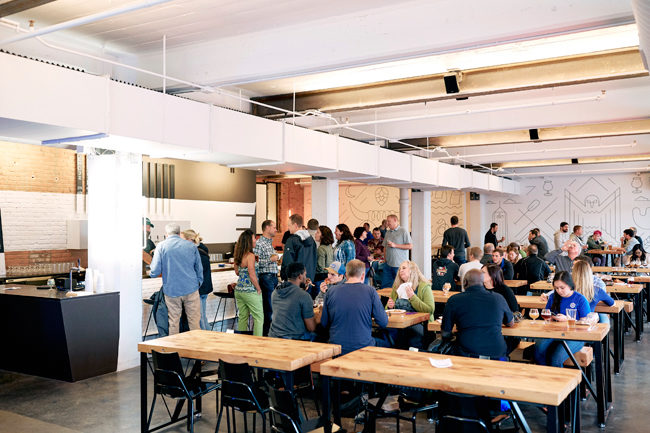
HeadFlyer gets is name quite unceremoniously from a time when Miller and his wife, Amy, drove by Headflyer Lake in northern Minnesota and simply liked the name and the image it evoked. Together with two additional partners, Austin Lee and Nate Larson, the Millers searched for a space, settling on the Northeast Minneapolis because of the building they found there, rather than the concentration of brewers in the neighborhood.
The Miller (no relation) Textile Building sets HeadFlyer geographically east of most other Minneapolis breweries. The taproom’s design by Christian Dean Architecture is minimalist and clean, and the contrast of textures and cozy scale don’t scream “brewery!” Honey-toned wooden benches and tables were custom made from the building’s old flooring. The wallpaper and a splash of neon made me briefly crave frozen yogurt.

Despite its charm, the space has presented challenges in outfitting its 15bbl brew house. Low (read normal) ceilings limit batch size. On the other hand, smaller batches lead to faster turnover and more variety. To save space, beer is served directly out of large vessels called bright tanks as well as from kegs.
Miller is currently leading with tried-and-true recipes that have been developed over years of home brewing, and he has no declared specialty as of now. His beers were successful overall, with a misstep here and there.
The golden ale, None the Wiser ($5 a pint), will appease a wide audience. It’s grain-forward with upfront sweetness that is cereal-like. The finish is surprisingly dry and hoppy. Lager drinkers or those with less of a taste for craft beer may opt for this ale as it is lagerlike in its levity. As the beer warms, though, the sweetness becomes off-putting.
More successful is the Vanilla Bean Porter ($5 a pint). Vanilla in dark beers is often either overpowered or overpowering. This version has significant vanilla in the aftertaste but little on first sip. It tastes natural and complements the initial coffee and chocolate flavor contributed by the roasted malts. The body is noticeably thin, but a coffee character builds along with a hint of a cherrylike ester.
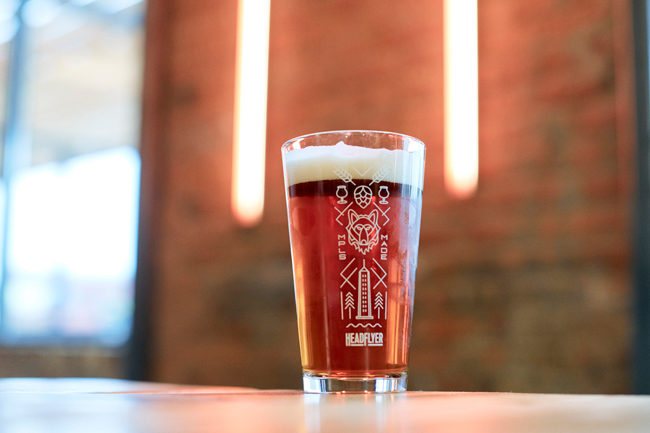
Though a troublesome buttery aroma gave a poor first impression, the Freckled Amber ($5 a pint) grew on us. This is a safe beer, full of caramel flavors, with contrasting moderate carbonation that is universally appealing. This amber doesn’t really declare itself any further as a malty classic, like an Irish Red, but also doesn’t fall into the “hoppy red” territory of Steel Toe Rainmaker or Able House Red. It would be a complement to many different foods and seasons.
Finally, It Was All a Dream ($5 for 10 ounces) is one of three IPAs on the eight-beer menu. The terms “juicy IPA,” as seen in this case, and “East-Coast-style IPA” are the beer buzzwords of the year and have become familiar to many drinkers. These are hazy or cloudy beers with strong hop flavors and relatively low bitterness. It Was All A Dream is delightful with potent apricot and grapefruit aroma plus a distant note of tree sap. It’s viscous and moderately bitter.
The pints are bargain-priced in some cases, while the small pours don’t line up — any 5-ounce pour is $3, which is nearly double the cost per ounce of many other short pours in the neighborhood.
Miller emphasizes the importance of HeadFlyer as a community gathering space. He is looking forward to having neighbors enjoy his beer straight from the source, and as such does not plan to expand into distribution within the year. Food trucks and music are soon to come, as is a more robust beer menu.
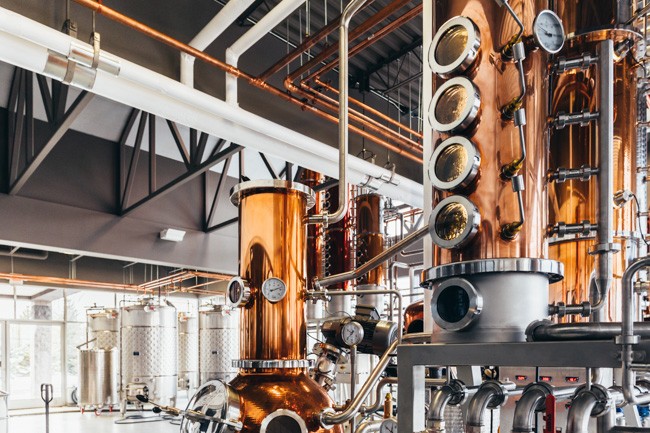
J. Carver releases Minnesota’s first brandy
With the help of neighboring wine experts and a blending team that includes a sommelier, Waconia’s J. Carver Distillery has released the first brandy made in Minnesota.
Brandy, which is distilled, fermented fruit juice, is gaining renewed steam with a younger crowd on the coasts and is shaking off its passe, bourgeois image. Most often made from grapes, brandy that comes to the United States is enjoyed most frequently by far in two states: Wisconsin and Minnesota.
Minnesota distilleries, however, usually focus on local products for distillation, which leaves drinkers with abundant local choices of wheat, corn, rye, and even beet-based liquors. Grapes, of course, are harder to come by. Local wineries grow what are known as cold-climate grapes, plants which thrive despite cooler winters, but the wineries import much of their raw product from wine-heavy regions, and they create a blend of the two.
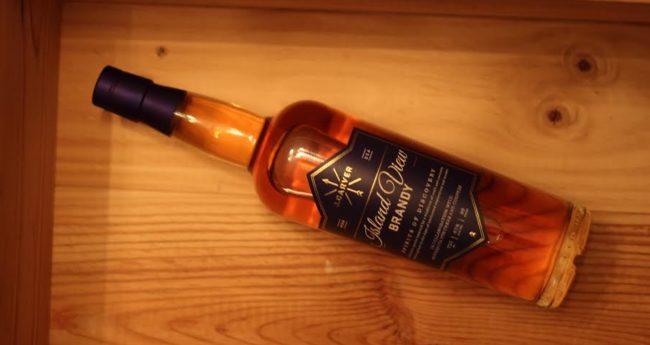
In the Island View Brandy ($50 for 750 milliliters), cold-climate grapes from Minnesota and New York are featured exclusively and bring an important balance of sweetness and acid to the still, a balance not found in traditional wine grapes.
The team at J. Carver began their brandy process the moment the copper stills were up and running because brandy must age for at least two years. The small first batch was started in 2014 with the help of Ben Banks, the winemaker at Sovereign Estates in Waconia.
“The thing people don’t realize is that most brandy [worldwide] is made from leftover grapes. The stuff that’s not perfect enough to be used for wine,” Banks says, pausing a bit. “Well, we use the best grapes. We make very good wine.” This leads to the term Cognac-style brandy, meaning higher quality.
Two factors produced an excellent product, according to Banks. First, there were low volatile acids in the wine, due to the quality of the grapes. Second, it was a slow fermentation. “I don’t know why, but it went very slowly, which is always better,” he says.
The result is a complex and pleasant warming spirit with little alcoholic heat. The aroma contains fresh wood shavings, cocoa, and fig. At first sip, dominant flavors include toasted cedar, nutmeg, and cocoa butter, which are strongly incorporated with one another and smooth. Vanilla comes through on the finish.
Island View works well with both bitter and sweet citrus, which act in contrast to the dessertlike flavors. Its personality blooms beautifully with a splash of water or ice.
The name Island View is a reference to Coney Island on Lake Waconia, which is soon to undergo a major redevelopment. Bottles are now available on liquor store shelves.
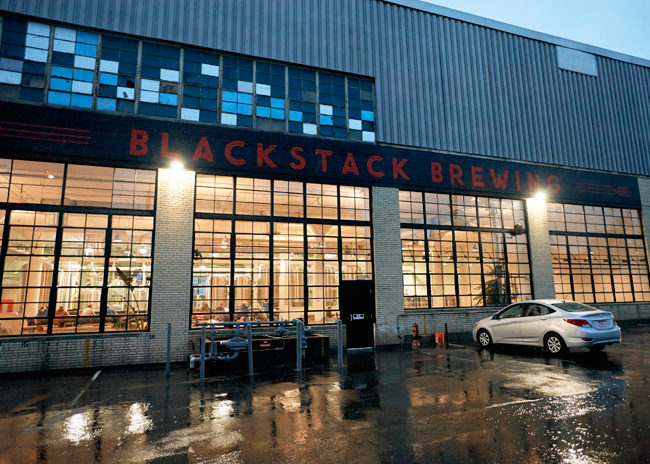
BlackStack Brewing in St. Paul
The publicity that BlackStack Brewing has gotten so far has been from patrons of the adjacent Can Can Wonderland, who while waiting for their mini golf tee times at the taproom, take to Twitter to pass the hours. Located near the Midway area of St. Paul, the brewery flew well under the radar during years of planning, which according to owner Scott Johnson was entirely intentional.
“I just hate it when breweries say ‘opening soon’,” he laughs. “When is soon?”
Johnson and Bob DuVernois (BlackStack’s head brewer and a veteran of the local scene) were busy. They crafted 96 pilot batches before the building opened, while waiting for the city ordinances and permitting to shake out in their favor.
Since last month’s opening, traffic has been steady. Without declaring a specialty style or region of beers, BlackStack exceeds the bar previously set for classic styles at a brand new taproom. Expertise from DuVernois, formerly of Great Waters Brewpub and Excelsior Brewing Company, shows through and through.
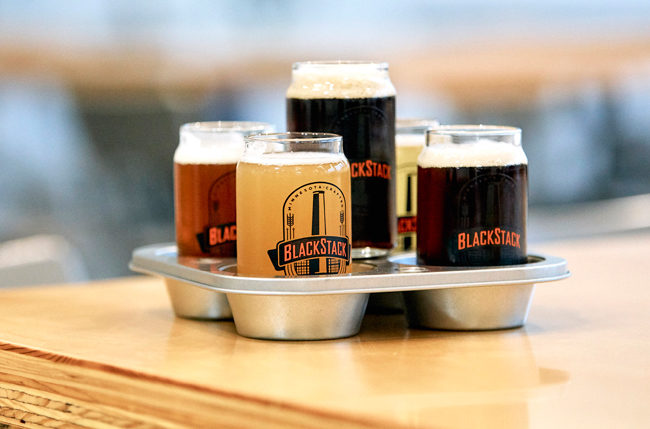
One of the most pleasant and crowd-pleasing beers of our visit was the Ratify! Belgian-style wit ($6 a pint). Strong, yeast-derived flavors and the added flavors of coriander and pepper set this wheat beer apart from other easy-drinking ales. At the same time, the beer maintains its bright and easygoing personality with a tart lemon aroma and aftertaste that acts as a palate cleanser, leaving each sip to beg for another.
The black lager offers guests a decision: To coffee, or not to coffee. Spare Parts is the lager alone, while Spare Grounds has coffee added ($5 for 12 ounces). On its own, the dark lager displays excellent body, a frequent downfall of richer beers at new breweries, while the buoyancy from carbonation keeps it seasonally appropriate. In the caffeinated version, coffee taste is sustained throughout, which works in tandem with roasted and caramel malts. Together, these elements create a bitter-cocoa profile which will satisfy dark beer lovers.
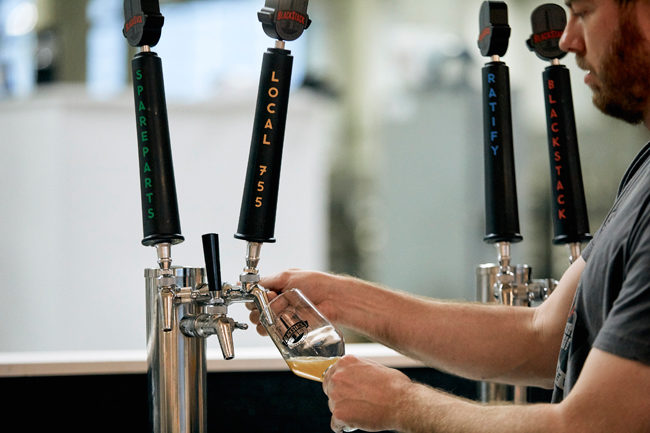
Born out of experimentation with Loughran Family Malt of Ireland, the black lager was originally made after the maltster approached BlackStack with the request that they use this dark grain. The name Spare Parts comes essentially from using what was available to brew something on the spot, which at that time was Johnson’s garage.
Locally roasted True Stone Coffee is added in the form of cool brew, a method of steeping coarsely ground coffee in cool water for 22 hours. The advantage to cool brew over cold press, according to True Stone’s Tim Ficker, is “a much less acidic result.”
“We love working with the folks at True Stone,” explains Johnson. “They are just as serious about their coffee as we are about our beer.”
On the bitter side, the Local 757 New-England-style IPA ($8 a pint) showcases the trend of the hazy IPA and was added to the taproom’s opening lineup at the insistence of Johnson’s son and assistant brewer, Murphy Johnson. Made with a different variety of hops for each batch, this version features Australian Vic Secret hops, and nearly all are added very late in the brewing process. This means that the brewer can take advantage of the volatile hops oils for flavor and aroma while minimizing bitterness. The charm of this style is in its balance, with neither hops nor malt dominating.
Perhaps the most intriguing beer on the list is the Ends Meet, dubbed an “Antwerp-inspired Belgian-style ale” — abbreviated on the menu as “dark saison.” Neither description really does justice to the hazy, amber colored beer, which coats the palate with warm spices and dark fruit but leaves delicately. The flavors are similar to those of a Belgian dubbel, but in a restrained fashion. Johnson was inspired by his past travels to Antwerp, Belgium when he was the owner of All Saints Brands Inc., an import company that he operated about 15 years ago. There he fell in love with De Koninck, another ale that defies description in part due to the House Yeast strain’s character.
Yeast is of extreme importance to BlackStack. Johnson and DuVernois have prioritized variety of yeast, using a different strain for each of their current beers despite the high cost. The Ends Meet, futhermore, features a specialty strain, used only in this brew, that is bred, maintained, and shipped by their supplier.
“The challenge for brewers is what you want to brew versus what you want to aim for,” Johnson says. “You have to please the critic, but the general public, too.” This speaks to his dichotomous view of the future, and of his patrons. A taproom ensures an income, he noted. But distribution is in the distant future, first to a small handful of bars that he describes as loyal friends, and then potentially to liquor stores.
The clear drawback of a visit is the taproom space — it’s sparse to an industrial degree with very little warmth or character. Fortunately, friendly staff make up for what could otherwise feel almost sterile.

